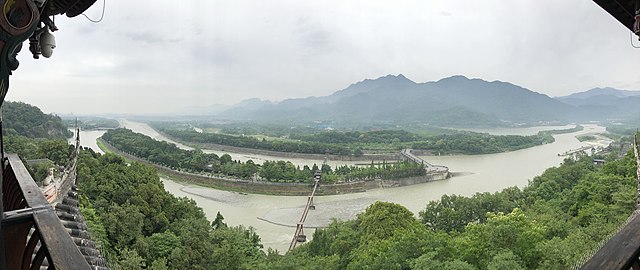Chengdu–Chongqing railway
Chengdu–Chongqing railway or Chengyu railway, is a single-track electrified railroad in the Sichuan Basin of Southwest China between the cities Chengdu and Chongqing. Chongqing's short form name is Yu (渝) and the railway is named after the two cities. The line has a total length of 505 km (314 mi).
Line in Jianyang
A locomotive adorned with a portrait of Mao Zedong at the opening ceremony of the Chengdu-Chongqing railway on July 1, 1952.
He Long cuts the ribbon at the opening ceremony.
The Sichuan Basin, formerly transliterated as the Szechwan Basin, sometimes called the Red Basin, is a lowland region in southwestern China. It is surrounded by mountains on all sides and is drained by the upper Yangtze River and its tributaries. The basin is anchored by Chengdu, the capital of Sichuan province, in the west, and the direct-administered municipality of Chongqing in the east. Due to its relative flatness and fertile soils, it is able to support a population of more than 100 million. In addition to being a dominant geographical feature of the region, the Sichuan Basin also constitutes a cultural sphere that is distinguished by its own unique customs, cuisine and dialects. It is famous for its rice cultivation and is often considered the breadbasket of China. In the 21st century its industrial base is expanding with growth in the high-tech, aerospace, and petroleum industries.
Sichuan Basin landscape in Zitong County
Haze forming within the Sichuan Basin, with the Daxue Mountains to the west
Evergreen broadleaf forests on Mount Emei
The 2000-year-old Dujiangyan irrigation project







